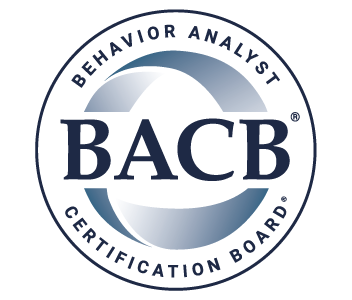Tune into our new podcast episode, RBT Supervision Systems, which explores the importance of the organizational management of RBT supervision.
Tag: Resources
How to Represent Your BACB Certification Status

What’s in a name? When it comes to representing your certification status, the answer is everything.
At some point, you’ve heard us say “Be sure to properly represent your BACB certification status.” But what does that mean? What’s the “proper” way to do it? That’s what we plan to answer in this blog, but here’s the gist of it:
When you refer to your BACB certification, you must refer to its status—whether active, inactive, or somewhere in between—accurately.
It might surprise you how often this comes up in day-to-day life. You refer to your certification status when chatting with friends about your current studies or career. It’s mentioned when you work with peers, clients, parents/guardians, and employers in classrooms and clinical settings. You write it on your resume, job applications, and billing authorizations. It even crops up when you’re training, supervising, or giving lectures.

So, here’s another question for you, one that has echoed through school halls and study rooms for centuries: Why does this matter? The truth is that misrepresentation can have real-life consequences, even if done accidentally. In just a minute, we’ll outline how to accurately represent your certification status, but first, we need to discuss why it’s so important:
- Protecting consumers: Imagine that you’re an RBT applicant. You completed your 40-hour training, studied the materials, and scheduled your exam. Believing that you’ll soon pass, you put that you’re an “RBT Pending Examination” on your resume, and you get a job. Now you’re working with a client one-on-one, but you’re not certified. What if you don’t pass the exam? Uh oh. This is just one example of how misrepresentation can open a can of worms that’s potentially dangerous for you, your employer, and most importantly, your client.
- Adhering to BACB ethics requirements: As you know, all BACB applicants and certificants are bound by a code of ethics. These codes mandate that behavior analysts and technicians represent themselves accurately, and a violation could put your eligibility or certification at risk. For the details, check out what standard 2.08 of the Ethics Code for Behavior Analysts and standard 3.07 of the RBT Ethics Code (2.0) have to say about misrepresentation.
- Protecting the value of your certification: All BACB certification marks are registered with the United States Patent and Trademark Office (among other jurisdictions), and it’s crucial that they’re used correctly. As we mentioned in the July 2021 BACB Newsletter, if we fail to enforce our trademark rights, they could be jeopardized, and BACB certifications could lose their value. For specifics, check out the Guidelines for Use of BACB Intellectual Property.
How-To Guide
In this section, we’ll outline the dos and don’ts of representing your certification status. These guidelines are airtight to avoid any possible confusion, as confused clients and employers are not informed clients and employers. We hope that these examples make your life a little bit easier:
| Status | Guidelines |
|---|---|
| Active Certification |
As a reminder, you don’t need to use the registered trademark symbol when referring to your own certification (e.g., RBT®). |
| Applicant |
|
| Inactive Certification (e.g., on voluntary inactive status, no supervisor) |
As a reminder, those on voluntary inactive status and those who hold an RBT or BCaBA certification but do not have a qualified supervisor on record with the BACB must indicate that their certification is inactive if they need to refer to their certification. For more information, check out the Inactive Policy in the RBT, BCaBA, or BCBA Handbook. |
Bonus Tips

- Don’t say that the BACB licensed you: It’s important to note that there’s a difference between the BACB, which is a credentialing organization, and a licensure board. The BACB provides certifications, not licenses. If you practice in the US and want to learn more, visit the US Licensure of Behavior Analysts web page.
- Don’t say that the BACB is your employer: Please don’t represent yourself as a BACB employee, as it’s a violation of our Terms of Use. We see this most frequently on social media platforms like LinkedIn. Instead, list your certification in LinkedIn’s License or Certification section.
- Don’t modify BACB trademarks: In the past, we’ve seen some funny takes on BACB certification marks, such as “BCBA-CS” for “BCBA consulting supervisor.” While we must give points for creativity, BACB trademarks aren’t a choose your own adventure. Please only use them as intended: RBT, BCaBA, BCBA, and BCBA-D.
How to Address Misrepresentation

Now that you know what to do and why, let’s talk about misrepresentation in the real world: What should you do if you see someone misrepresenting their certification status? What if that person is you?
The first step is to gently correct if possible. If the issue persists, the second step is to report it to all relevant entities (e.g., BACB, licensure board).
You Misrepresented Your Status
Let’s say that while reading this blog, you realized that you’ve been misrepresenting your certification status. Don’t panic! If you can, fix the error. Change your social media bio, revise your resume, contact the website’s administrator, shout your true certification status from the mountain tops—whatever you need to do. If you can’t fix the error yourself, tell your supervisor (if you have one), document your attempts to correct it, and self-report to the BACB through the Ethics Self-Reporting Form. Don’t forget to include your documentation in the submission.
Someone Else Misrepresented Their Status
If you notice that someone else is misrepresenting their certification status, follow the same procedure. First, give them an opportunity to fix the error. Here’s one way to begin that conversation:

“I hope you’re doing well. I just checked out your social media profile, and I’m so excited to see that you’re in a behavior analysis program. I’m not sure if you’re aware, but you can’t represent yourself as a BCBA (or a BCBA in training) until you’ve passed the exam, as it might be confusing. The BACB has clear guidelines on what’s acceptable. Can I share some resources with you, or could we hop on a call to chat about it?”
You don’t have to repeat this word-for-word, but it’s a good start.
If you aren’t comfortable reaching out to this person, or if they fail to fix the error, please report them to the BACB through the Reporting Infringement or Misuse Form. We’ll take it from there.
In summary, to represent your certification status properly, you should follow our guidelines and be as clear as possible when communicating with others. Taking misrepresentation seriously benefits your clients, your employer, and you. If you see misrepresentation in the wild, please take all appropriate steps to address it.
Thank you for taking the time to read this blog post. Your willingness to learn more about these topics helps uphold the integrity your certification. If you have any questions or concerns, please get in touch through the Contact Us Form.
Introducing the RBT Ethics Code (2.0)
Inside the BACB: Episode 25
Introducing the RBT Ethics Code (2.0) – In this episode of Inside the BACB, join CEO Dr. Jim Carr and Director of Ethics Dr. Tyra Sellers as they discuss the RBT Ethics Code (2.0), a revised version of the ethics code for RBTs. Tune in now to learn about the revision process, changes to current ethics standards, and more.
You can find all of the BACB’s videos on our YouTube channel.
Helpful Ethics Resources
Inside the BACB: Episode 22
Helpful Ethics Resources – In this episode of Inside the BACB, the BACB’s Director of Ethics Dr. Tyra Sellers and Ethics Educational Manager Dr. Sarah Lichtenberger discuss two new, helpful resources for certificants: the Continuity of Services toolkit and a video that covers the nuts-and-bolts of self-reporting to the BACB. Listen now for more information.
You can find all of the BACB’s videos on our YouTube channel.
BACB Data and Developments in 2020
The BACB is pleased to share BACB Data and Developments in 2020, a new video with an accompanying infographic. This video recaps 2020 at the BACB, touching on important changes, milestones, and data points. Check it out to see just how much the practice of ABA is growing. And don’t forget to view the infographic for a concise summary of last year’s most important data points.
Happy New Year, and thank you for your dedication to ABA!
BACB Data and Developments in 2020
BACB Data and Developments in 2020
By the BACB
The BACB is pleased to share BACB Data and Developments in 2020, a new video with an accompanying infographic. This video recaps 2020 at the BACB, touching on important changes, milestones, and data points. Check it out to see just how much the practice of ABA is growing. And don’t forget to view the infographic for a concise summary of last year’s most important data points.
You can find all of the BACB’s videos on our YouTube channel.
Check out this infographic for a brief overview of the BACB’s data and developments in 2020.
Introduction to the Ethics Code for Behavior Analysts
Inside the BACB: Episode 15
Introduction to the Ethics Code for Behavior Analysts – In this episode of Inside the BACB, join CEO Dr. Jim Carr and Director of Ethics Dr. Tyra Sellers as they discuss the Ethics Code for Behavior Analysts, an updated ethics Code for BCBAs and BCaBAs. Listen now to get the inside scoop on the revision process, important additions to the Code, and more.
You can find all of the BACB’s videos on our YouTube channel.
Tips for New Certificants

First things first—congratulations! You met your eligibility requirements, passed your examination, and earned your certification. You just successfully finished what some believe to be the hardest part of becoming an RBT, BCaBA, or BCBA.
But now you’re facing a whole new set of challenges, including maintaining your certification and assuming your new role. To help you start off on the right foot, here are a few tips for your first weeks as a certificant.
Tip #1: Review the contact information in your BACB account
When you earn your certification, it’s important to review your BACB account and update any outdated or incorrect information. Although the BACB strongly encourages applicants to review and update their contact information as changes occur, this tip is especially important once you pass your examination and earn your certification.
But why is this review so crucial?
For one, within 4–6 weeks of passing your BCBA or BCaBA examination, your official certificate will arrive at the mailing address listed in your BACB account—however outdated that address may be. So, to prevent a mailing mishap, be sure to update your home address. Also take care to review your name, phone number, and email address, as outdated or incorrect information in any of these fields may create a problem down the line.
Tip #2: Get familiar with the Certificant Registry
The Certificant Registry is a database that includes vital information about all BACB certificants, including their location; certification number, status, and activation/recertification date; disciplinary actions or sanctions, if any; and availability for supervision services. It’s a valuable resource for employers, service recipients, applicants, and certificants alike, so we recommend getting to know it a little bit better.
As a new certificant, you will not appear in the database immediately. Like your certificant number, which may take up to 24 hours to appear in your BACB account, your name may take up to 48 hours to appear in the Certificant Registry. At that point, your certification information will become public.
Once your information is public, potential employers and supervisors can use the Certificant Registry to verify your certification. You can also use the registry to find and contact supervisors in your area if or when necessary. But be careful—as stated earlier, if your address is not updated in your BACB account, the registry may not reflect your current location.
We encourage you to give the Certificant Registry a try—maybe even search your own name to see how you will appear to others!
Tip #3: Update your resume and curriculum vitae
This tip is as short and sweet as they come, but it’s important nonetheless: Don’t forget to list your new certification on your resume and/or curriculum vitae! Once you enter the working world, you’ll want to ensure that your new title—and all of the hard work that went into getting it—is reflected on paper for potential employers to see.
Tip #4: Research your state’s licensure requirements
If you are a BACB certificant who intends to practice in the United States, you must adhere to your state’s licensure requirements before practicing or billing. This tip may be the most crucial in this list, as ABA practitioners who practice without licensure in regulated states may face serious consequences, such as disciplinary actions against their certification or even incarceration.
Follow these steps to learn more:
- Visit our U.S. Licensure of Behavior Analysts web page.
- If your state is regulated, click on your state in the table to navigate to its regulatory board website.
- There, you can find detailed information about your state’s licensure requirements and applications, if necessary.
Tip #5: Establish a maintenance plan
“There’s no such thing as too early!” – Bird that got the worm
It never hurts to be prepared, which is why it’s a great idea to begin establishing a plan to meet the maintenance requirements for your certification as soon as possible. As an RBT, BCaBA, or BCBA, you must meet specific requirements and complete certain tasks before you are able to recertify. It’s helpful to keep those to-dos in mind and plan ahead to avoid a last-minute panic or, at worst, an expired certification.
To create a maintenance plan, find out the length of your recertification cycle, the continuing education (CE) requirements that you must meet, if any, and the tasks that you must complete within the 45-day period before your recertification date. Then, do your research! Visit the Continuing Education tab in your BACB account to find a summary of the continuing education units needed for your current certification cycle or review the RBT Renewal Competency Assessment Packet—maybe even mark your target milestones on a calendar or planning app.
To get started, check out the following table to see a basic overview of the current BACB maintenance requirements for each certification.
| Overview of Maintenance Requirements | ||||
|---|---|---|---|---|
| Certification | Recertification Date | CE Requirements | Ongoing Requirements | 45 Days Before Recertification Date |
| RBT | 1 year from original certification date | Not applicable |
|
|
| BCaBA | 2 years from original certification date |
|
|
Recertify |
| BCBA/BCBA-D | 2 years from original certification date |
|
Abide by BACB ethics and self-reporting requirements | Recertify |
For more detailed, in-depth information about current BACB maintenance requirements, please visit the RBT, BCaBA, or BCBA Handbook.
Tip #6: Check out the Resources tab in your BACB account
As a new BCBA or BCaBA, you have access to multiple behavior-analytic scholarly journals and databases. These journals and databases may be helpful resources for you as you integrate current research into your behavior-analytic practice activities—and the best part is that through your BACB account, they’re free!
We encourage you to take some time to explore the Resources tab, as spending time in behavior-analytic literature is one of the best ways to stay in the know about advancements in the field. In fact, in a profession that is rapidly advancing, your education will continue long after you pass your examination.
These six tips are not the end-all, be-all of your first weeks as a BACB certificant. No matter how thoroughly you plan and prepare, you will surely run into hiccups and roadblocks at one point or another. That’s simply the nature of doing something new. Even so, we hope that these tips help you more confidently assume your new role.
Thank you for your hard work and dedication to applied behavior analysis. We are so happy to have you as a certificant. Best of luck!
The Professional Infrastructure of Applied Behavior Analysis
The Professional Infrastructure of Applied Behavior Analysis
By the BACB
This educational resource breaks down the different elements of the applied behavior analysis profession—and how the BACB and other organizations operate within it.
You can find all of the BACB’s videos on our BACB Videos web page or our YouTube channel.
Verifying BACB Credentials
Verifying BACB Credentials
By the BACB
This video outlines the purpose of the BACB Certificant Registry and offers guidance on how to use it. Please watch at your convenience.
You can find all of the BACB’s videos on our BACB Videos web page or our YouTube channel.


 Represent yourself in the following ways:
Represent yourself in the following ways: Do not represent yourself in the following ways:
Do not represent yourself in the following ways: